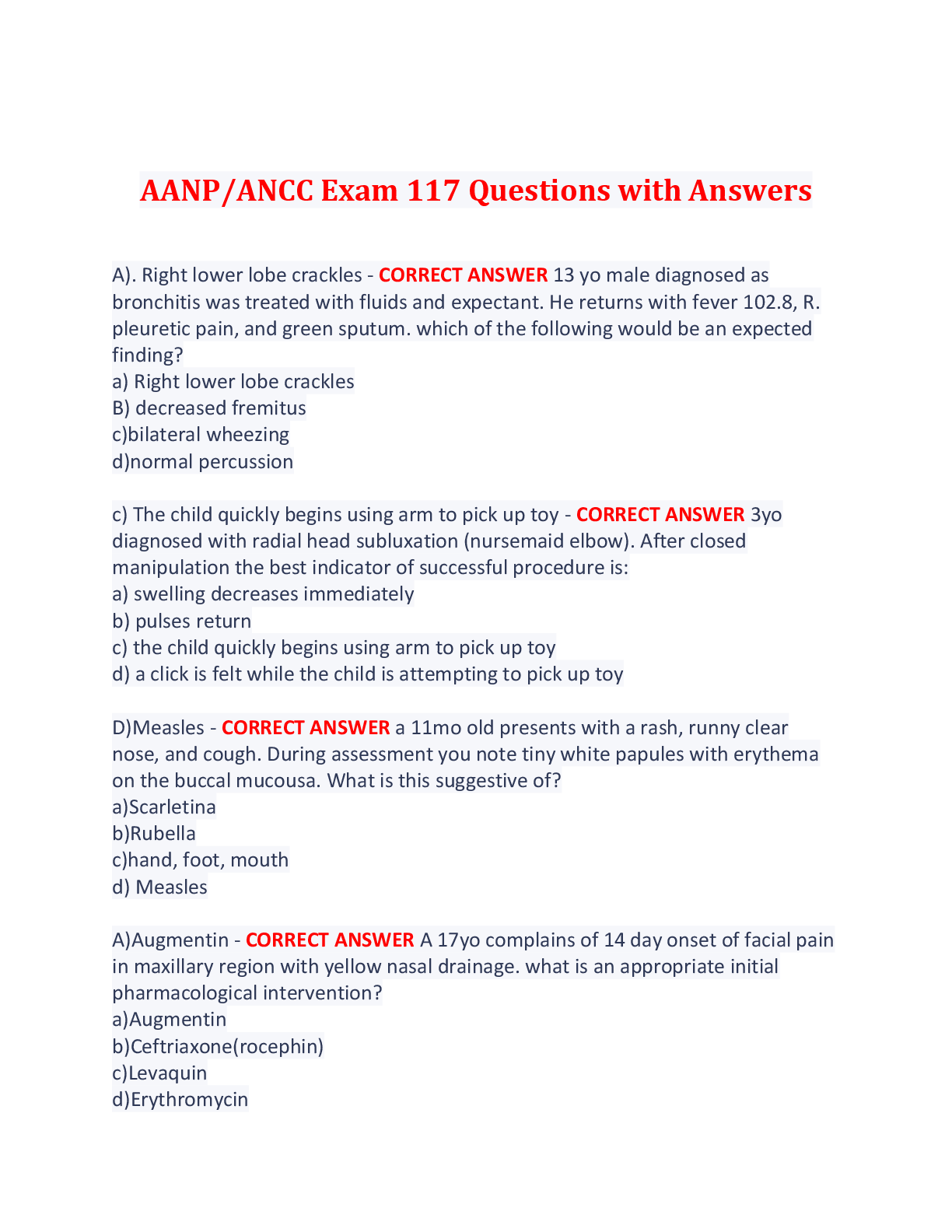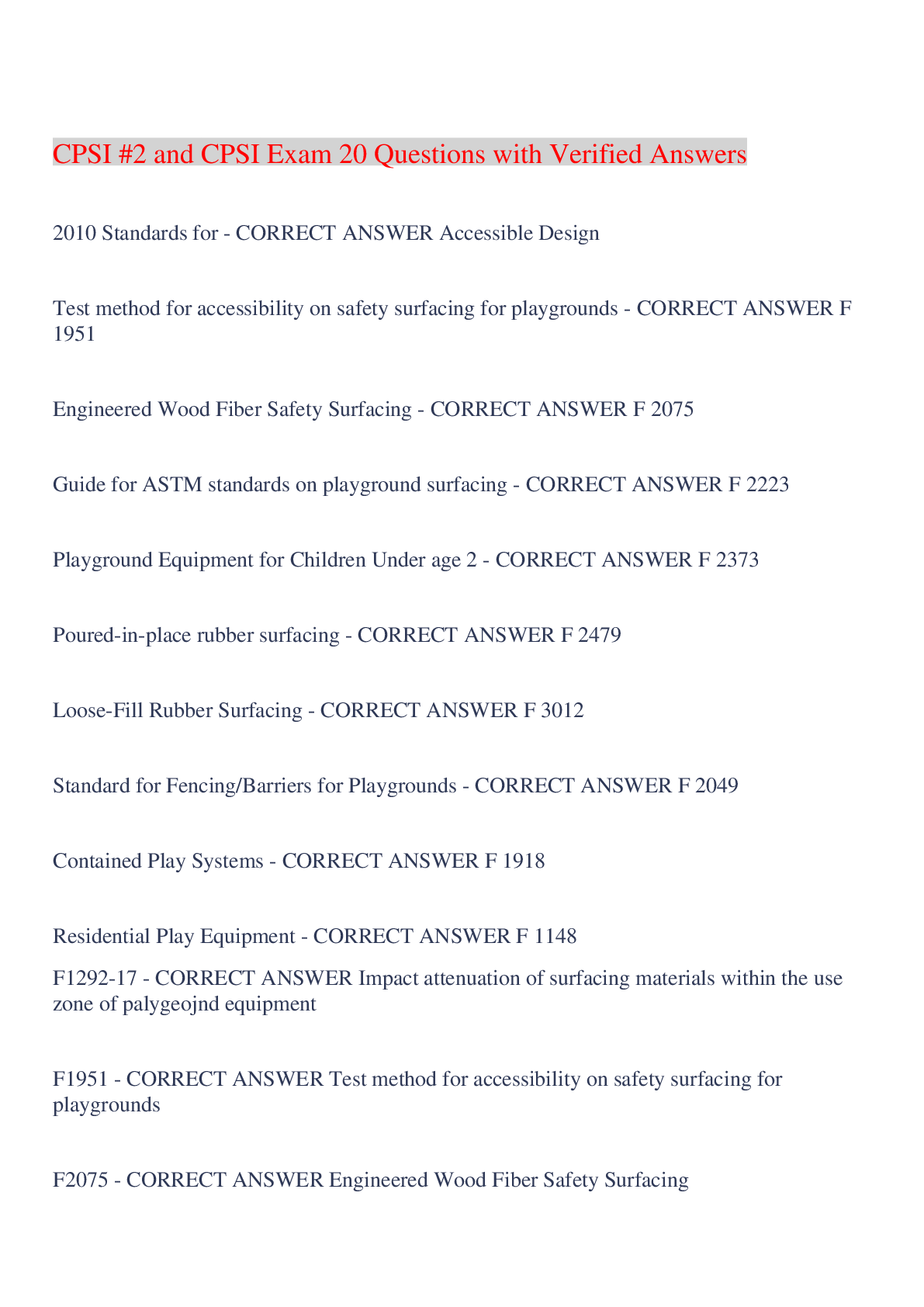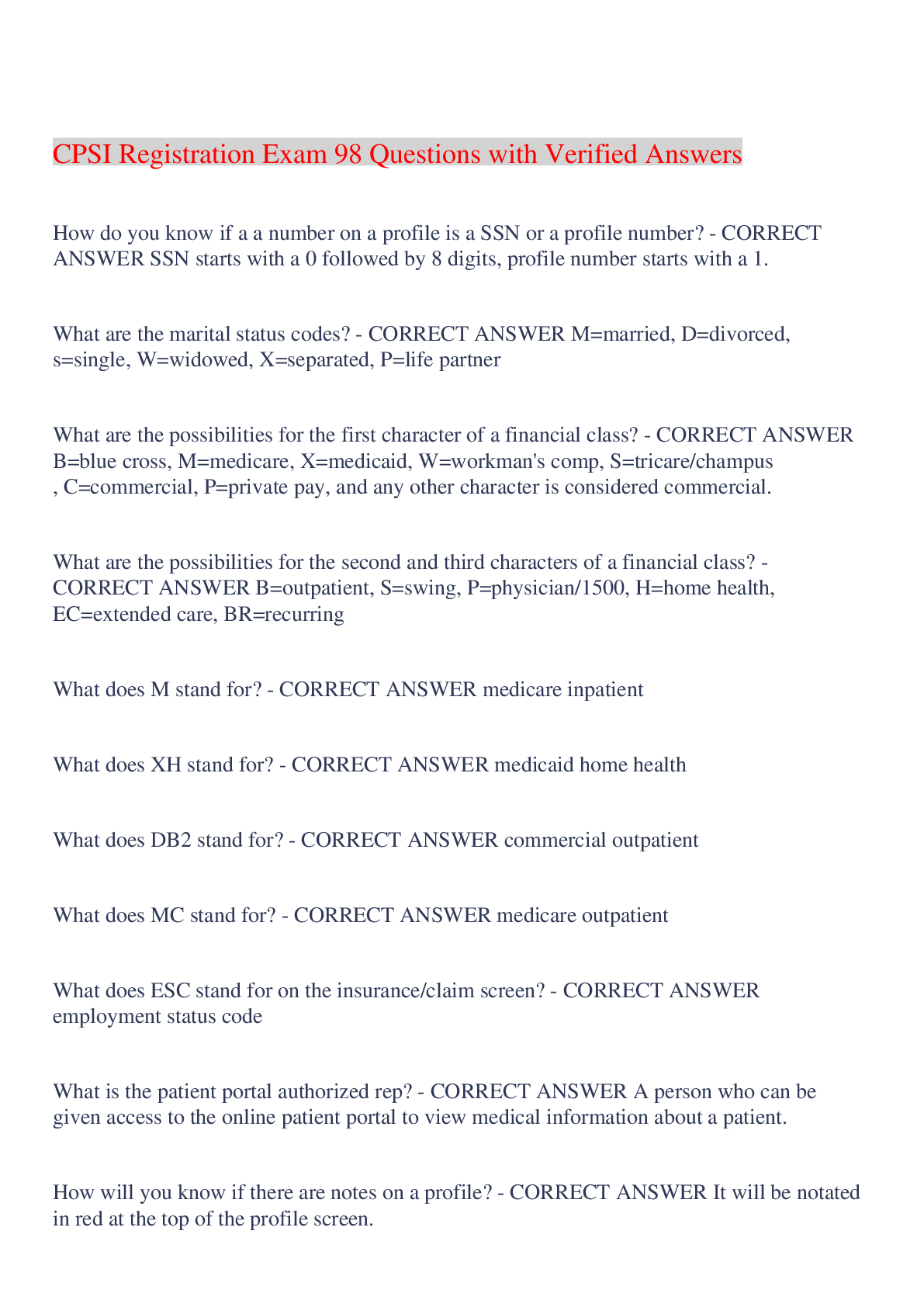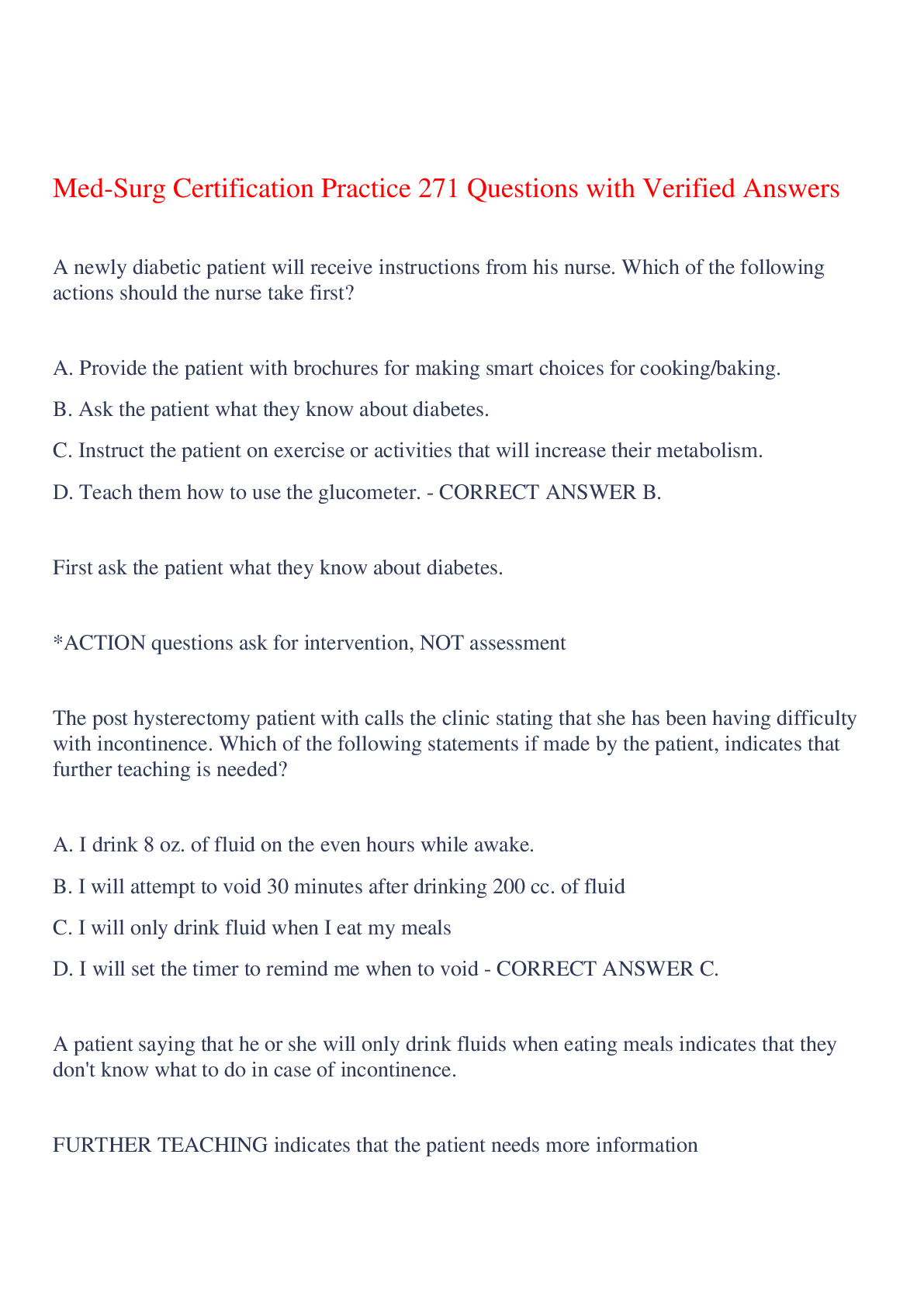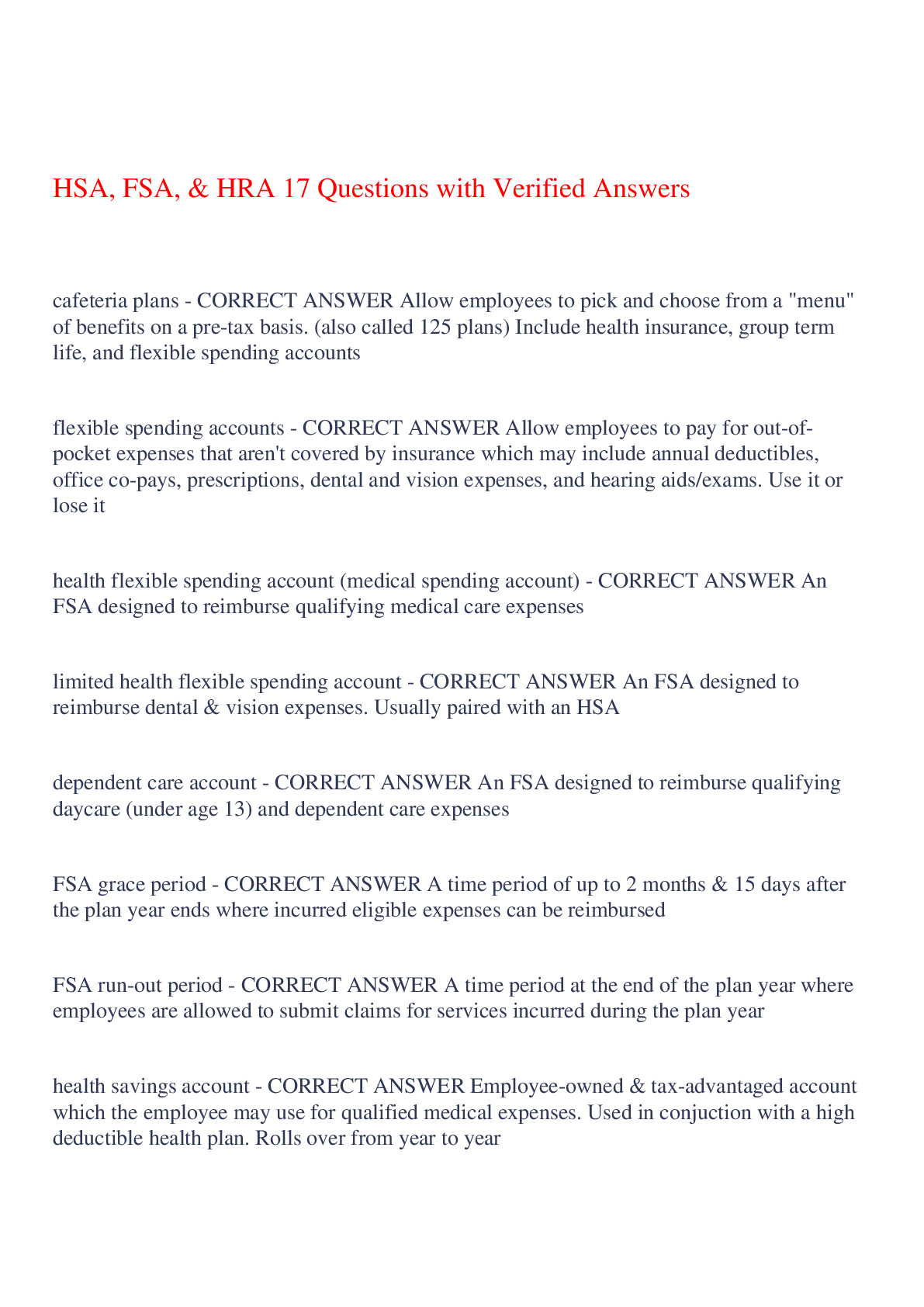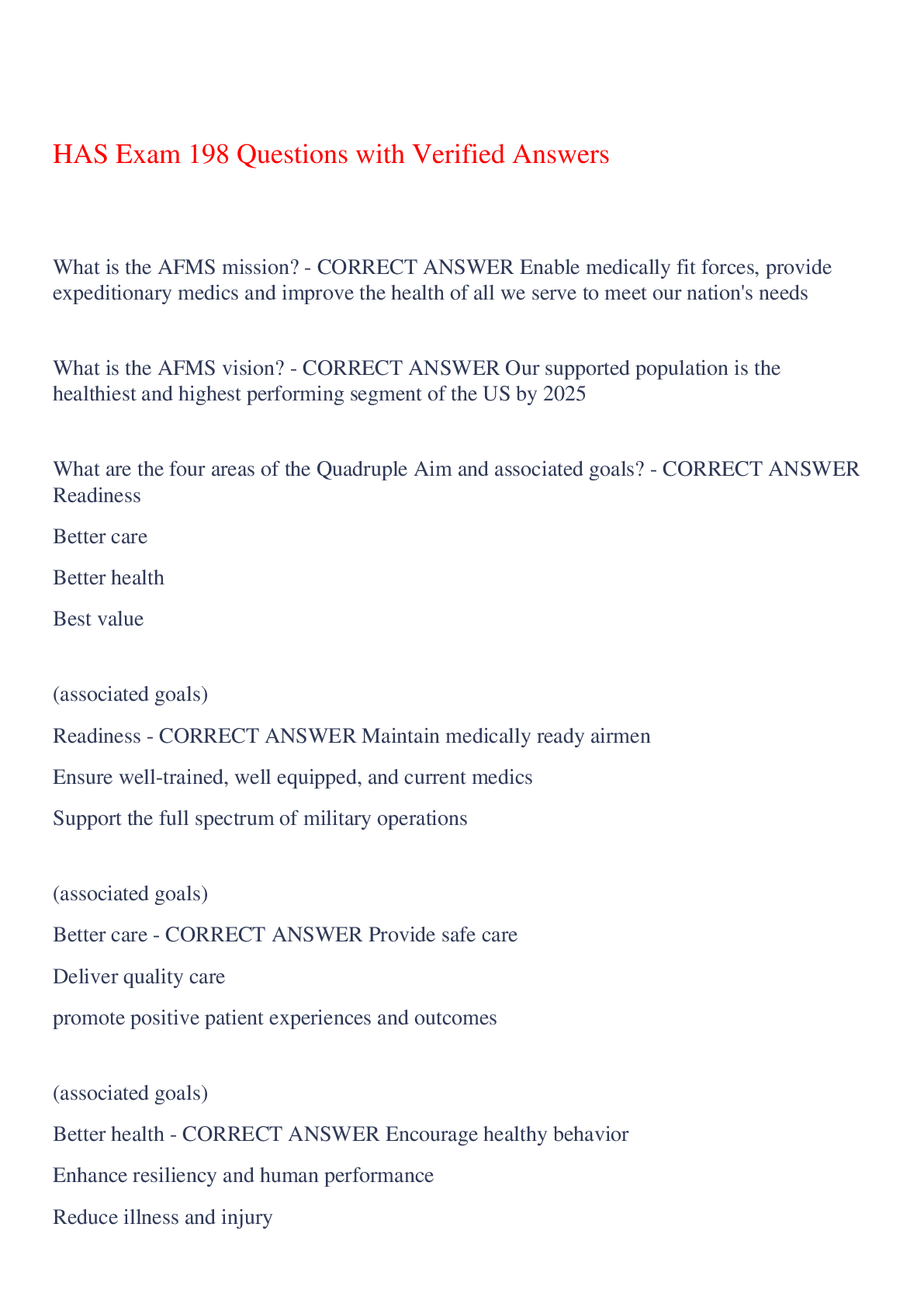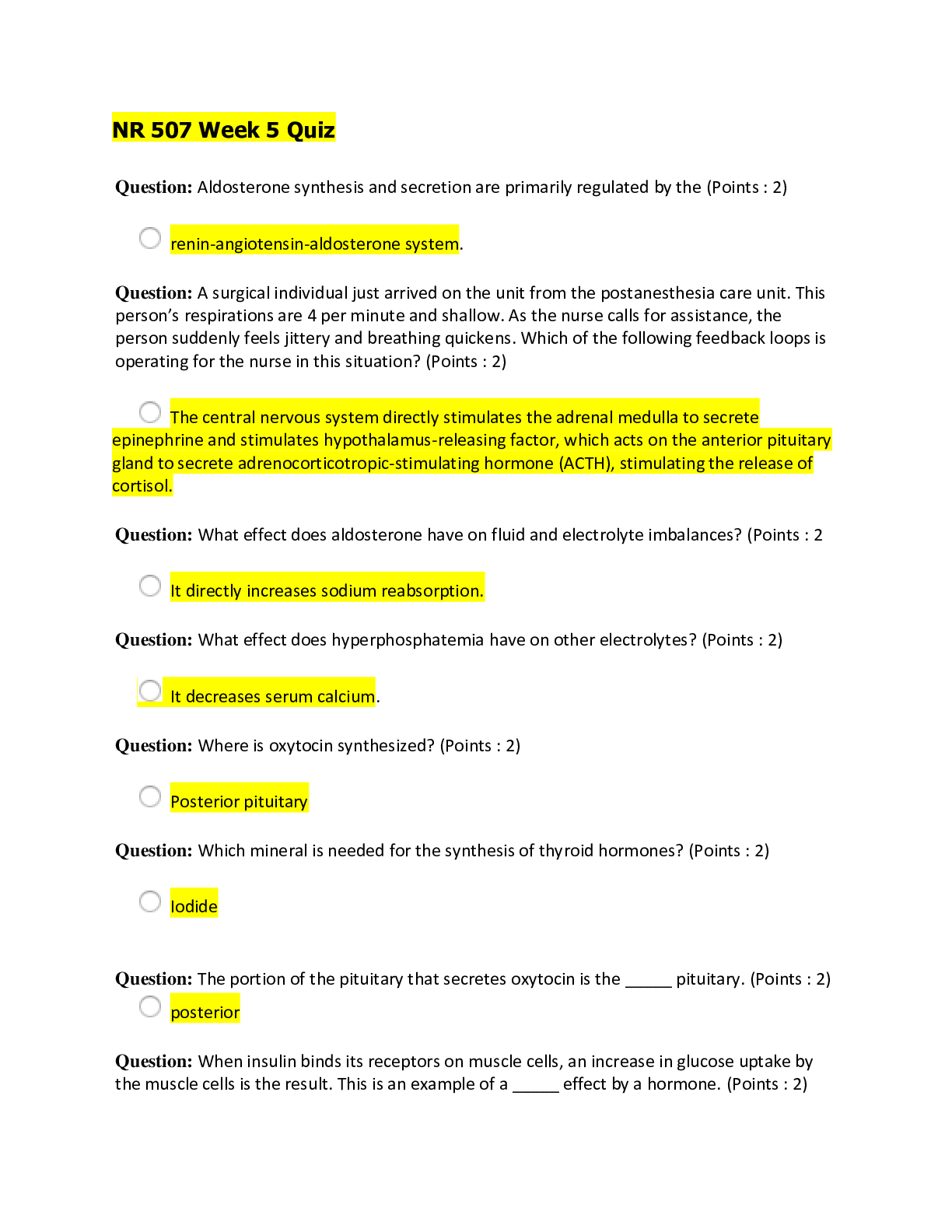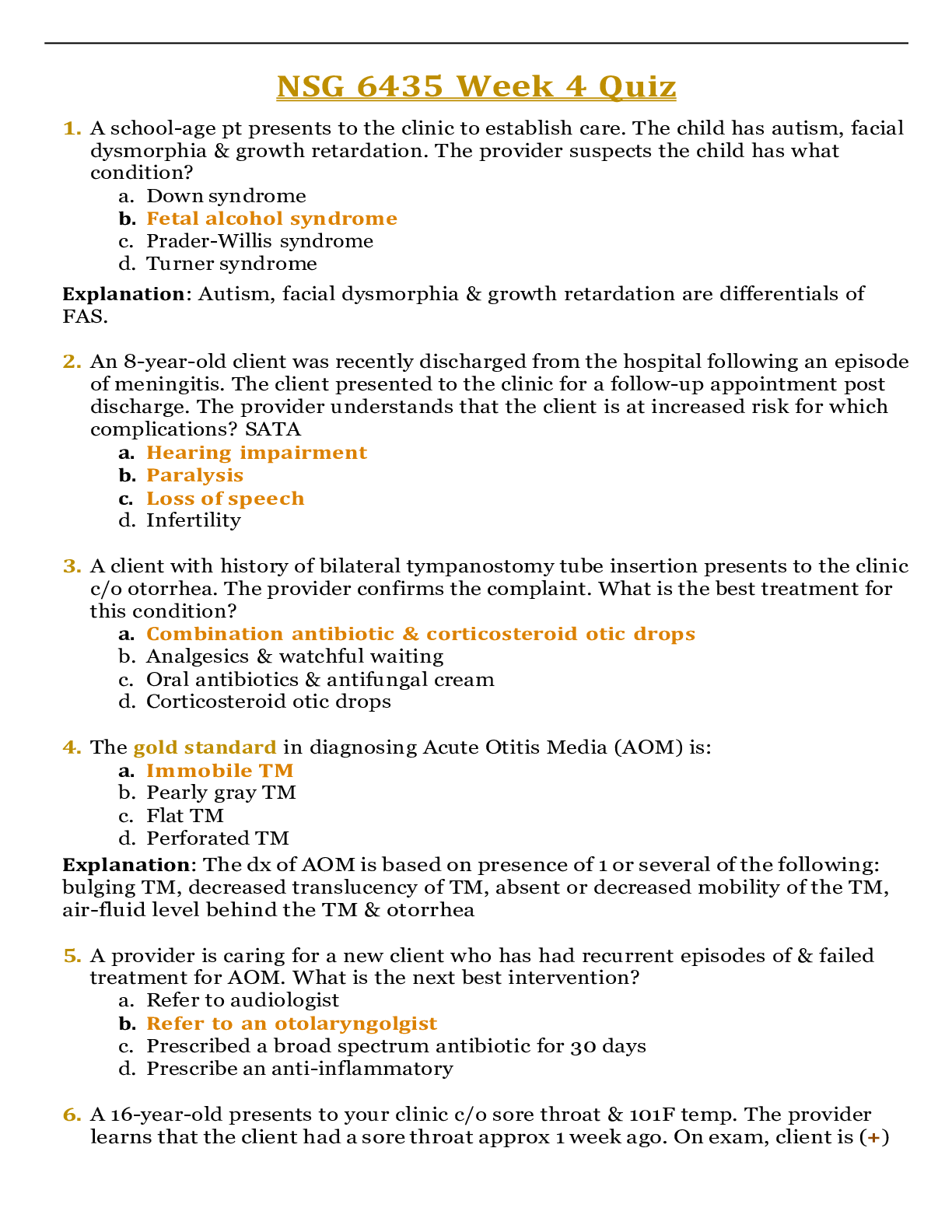Unit 1 and 2- LETRS Quiz Questions and Answers,100% CORRECT
Document Content and Description Below
Unit 1 and 2- LETRS Quiz Questions and Answers nformed teachers are _____ assurance against reading failure. - Correct Answerour best phonics - Correct Answerthe study of the relationships betwe... en letters and the sounds they represent phonemic awareness - Correct Answerconscious awareness of the individual speech sounds (constants and vowels) in spoken syllables and the ability to consciously manipulate those sounds. syllable - Correct AnswerUnit of pronunciation that is organized around a vowel; it may or may not have consonants before or after the vowel. orthography - Correct Answerwriting system for representing language morphophonemic - Correct Answerdeep alphabetic writing system organized by both sound-symbol correspondences and morphology (English orthography) morpheme - Correct Answerin language, the smallest unit that carries meaning metalinguistic awareness - Correct Answerability to think about and reflect on the structure of the language itself simple view of reading - Correct Answerword recognition (decoding) x language comprehension (comprehending) = reading comprehension decoding - Correct Answerability to translate a word from print to speech (sound-symbol correspondences) discourse - Correct Answerwritten or spoken communication ("the exchange") of information and ideas (between writer & reader) Listening comprehension may _____ reading comprehension, but the reverse is _______. - Correct Answerexceed, not true phonology - Correct Answerphonemes can be sequenced, combined, and pronounced to make words (rule system withing language) (sounds /p/ and /k/ are never adjacent) morphology - Correct Answerstudy of meaningful units in a language and how the units are combined in word formation (Nat- root, Nature- noun, natural- adjective) semantics - Correct Answerstudy of word and phrase meanings and relationships (rank has multiple meanings) syntax - Correct Answersystem of rules governing permissible word order in sentences ("Our district recruits new teachers" "New teachers our district recruits") academic language - Correct Answerwritten or spoken language that is more stylistically formal orthographic mapping - Correct Answermental process used to store words for immediate retrieval Learning ___ depends heavily on ____ of recognized written symbols with _____ and the eventual connection of those sound patterns with _____. - Correct Answerto recognize words, accurate matching, spoken language, meaning Four Part Processing Model - Correct Answer-context processor: background knowledge - meaning processor: vocabulary -phonological processor: speech sound system -orthographic processor: spelling system phonological processing system - Correct Answerenables us to perceive, remember, interpret , and produce the speech- sound system of our own language and others orthographic processing system - Correct Answerseveral functions of recognition and recall of written language symbols grapheme - Correct Answerletter representing unit of sound (phonemes) meaning processing system - Correct Answer(semantic) interprets meanings of words in and out of context context processing system - Correct Answerinteract with and provide support for the meaning processor. Scarborough's Reading Rope - Correct AnswerLanguage comprehension (background knowledge, vocab, syntax/semantics, verbal reasoning & literacy knowledge) + word knowledge (decoding, sight words, phonological awareness) = skilled reading Dyslexia - Correct Answeran impairment of reading accuracy and fluency attributable to an underlying phonological process problems, usually associated w/ other kinds of language- processing difficulties. Basic questions to answer with assessment are: - Correct Answer1. Who needs help? 2. What kind of help do they need? 3. Is the help helping? 4. If not, what needs to change? automaticity - Correct Answerthe ability to read quickly and accurately w/o concious effort Ehri's Phases of Word- Reading Development - Correct AnswerPrealphabetic- incidental visual cues, general concepts of print Early alphabetic- letter names and some letter sounds; early phonological/ phonemic awareness, syllable, onset-rime, initial phonemic matching Later alphabetic-start automatic sight word recognition (regular and a few irregular words); initial set of phoneme/grapheme correspondences; basic phonemic awareness; segmentation and blending of 3-4 phoneme words Consolidated- increasingly automatic sight word recognition; orthographic mapping; phoneme-grapheme links; advanced phonemic awareness; deletion, substitution, reversal of phonemes phoneme- grapheme mapping - Correct Answermatching of phonemes in words with the graphemes that represent them alphabetic principle - Correct Answerconcept that letters are used to represent individual phonemes in the spoken word sight vocabulary - Correct Answerstudent's bank of words that are instantly and effortlessly recognized phonological working memory - Correct Answerthe "online" memory system that remembers speech long enough to extract meaning from it, or that holds onto words during writing; a function of the phonological processor. rapid automatic naming (RAN) - Correct Answerthe ability to quickly name a series of printed, repeated numbers, letters, or objects that should be known by role phonological awareness - Correct Answerconscious awareness of all levels of the speech sound system, including word boundaries, stress patterns, syllables, onset-rime units, and phonemes Phonemic Awareness - Correct Answerthe conscious awareness of the individual speech sounds in spoken syllables and the ability to consciously manipulate those sounds phonics - Correct Answerstudy of the relationships between letters and the sounds they represent; also used as a descriptor for code-based instruction onset-rime - Correct Answerthe natural division of a syllable into two parts, the onset coming before the vowel and the rime including the vowel and what follows it alliteration - Correct AnswerSuzy sells seashells by the seashore Onset and rime examples - Correct AnswerBoat- B-oat Rat- R-at Oat- O-at Chair- Ch-air Phoneme seperation - Correct AnswerBoat- /b/-/o/-/t/ Rat- /r/-/a/-/t/ Oat- /o/-/t/ Chair- /ch/-/a/-/r/ phoneme counting, blending, segmentation, deletion, and substitution - Correct Answercounting- /s/-/t/-/o/-/p/ blending- /s/-/t/-/o/-/p/ segmentation- say "stop"; say the sounds in "stop" deletion- say "stop"; now say "stop" w/o the /s/ substitution- say "stop"; now say "stop" but instead of the /t/ say /l/ hourglass for phonological awareness - Correct AnswerPHONOLOGICAL AWARENESS: early- syllables, alliteration, onset-rime basic- phoneme blending, phoneme segmentation, phoneme deletion advanced- substitution, reversal ORTHOGRAPHY graphemes digraphs vowel teams blends families syllables morphemes English has ____ phonemes and _____ letters - Correct Answer44: 26 Allophonic variation - Correct Answerslightly different pronunciation of a phoneme, depending on its place in a word consonant blend - Correct Answertwo or three consonant phonemes before or after a vowel in a syllable consonant stops - Correct Answerunvoiced- /p/ (lips together) /t/ (tongue on ridge behind teeth) /k/ (back of throat) voiced- /b/ (lips together) /d/ (tongue on ridge behind teeth) /g/ (back of throat) consonant nasals - Correct Answer/m/- lips together, /n/- tongue on ridge behind teeth, /ng/- back together consonant fricatives - Correct Answerunvoiced- /f/ (teeth on lip) , /th/ (tongue between teeth), /s/ (tongue on ridge behind teeth), /sh/ (tongue pulled back on roof of mouth), /h/ (glottis) voiced- /v/ (teeth on lip), /th-/ (tongue between teeth), /z/ (tongue on ridge behind teeth), /zh/ (tongue pulled back on roof of mouth) Consonant: glides - Correct Answerunvoiced- /wh/ (lips together), (/wh/) (back of throat) voiced- /w/ (lips together), /y/ (tongue pulled back on roof of mouth), (/w/) (back of throat) Consonant: Affricates - Correct Answerunvoiced- /ch/ (tongue pulled back on roof of mouth) voiced- /y/ (tongue pulled back on roof of mouth) Consonant liquids - Correct Answer/l/- (tongue on ridge behind teeth) /r/- (tongue pulled back on roof of mouth) consonant stops defined - Correct Answermade with one hard burst of sound consonant nasals defined - Correct Answerarticulated with air stream directed through the nose consonant fricatives defined - Correct Answerhissy sounds; audible friction is created when air is forced through small spaces in the mouth during articulation consonant affricatives defined - Correct Answercombine features of stops and features of fricatives; made with tongue pulled a little farther back than it is for /s/ and placed on hard palate on the roof of the mouth consonant glides defined - Correct Answerconsonants that are always followed by a vowel phoneme that literally glide right into that vowel. Consonant liquids defined - Correct Answerslipped consonant to describe, imitate, produce in isolation, or separate from vowels that precede them (float in mouth) digraph - Correct Answertwo letters that stand for a single phoneme vowel - Correct Answerphonemes that are voiced and open, which means they are produced w/ no obstruction of airflow through mouth schwa - Correct Answerempty vowel in an unaccented symbol (wagon) dipthongs - Correct Answersingle vowel phenomes that glide in the middle ex. say /oi/ slowly- begins with /aw/ and then shifts to a front, smiley position, /e/ ex. /ou/- front position (/a/) to a lip rounded position (/u/) [Show More]
Last updated: 2 years ago
Preview 1 out of 5 pages

Buy this document to get the full access instantly
Instant Download Access after purchase
Buy NowInstant download
We Accept:

Reviews( 0 )
$6.00
Can't find what you want? Try our AI powered Search
Document information
Connected school, study & course
About the document
Uploaded On
Feb 12, 2023
Number of pages
5
Written in
Additional information
This document has been written for:
Uploaded
Feb 12, 2023
Downloads
0
Views
60

